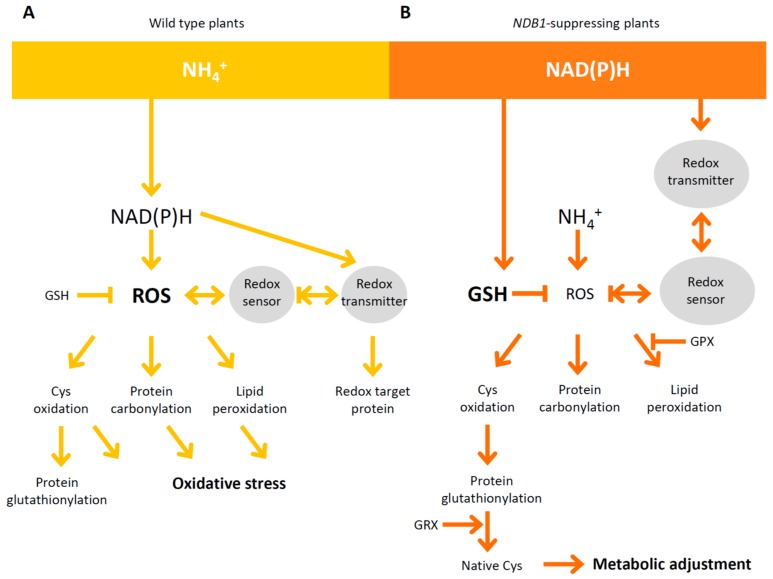Figure 9.
Schematic comparison between redox-related changes occurring in WT and NDB1 suppressor plants grown on ammonium as the sole nitrogen source. (A) Changes in redox homeostasis in WT plants are a direct consequence of ammonium assimilation, and a secondary effect is the induction of redox transmitters/sensors and ROS accumulation leading to protein carbonylation, lipid peroxidation, and oxidation of Cys residues, which causes oxidative stress in NH4+-grown WT plants; (B) NDB1 knock-down plants have an initial higher redox potential, and can rapidly induce changes in redox-related sensors/transmitters and glutathione content; in these plants, NH4+ nutrition is an additional factor that does not affect ROS content in tissues. Instead of exhibiting symptoms of oxidative stress symptoms, NDB1 knock-down plants undergo metabolic adjustment to a high redox input during NH4+ nutrition. Sharp arrows indicate stimulatory influences, whereas blunt arrows represent inhibitory effects.

